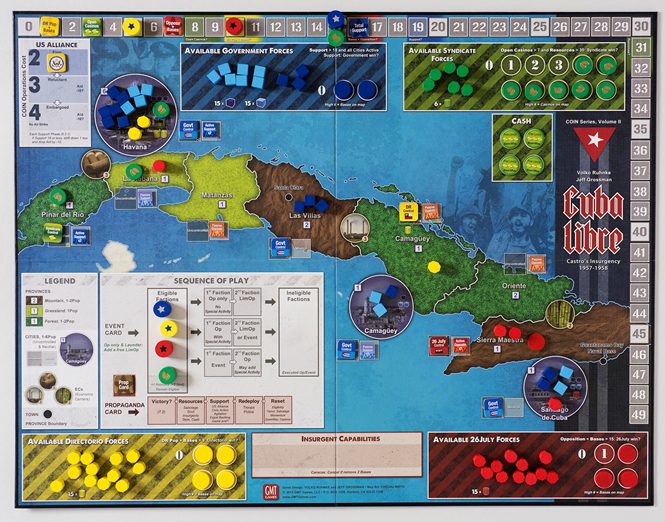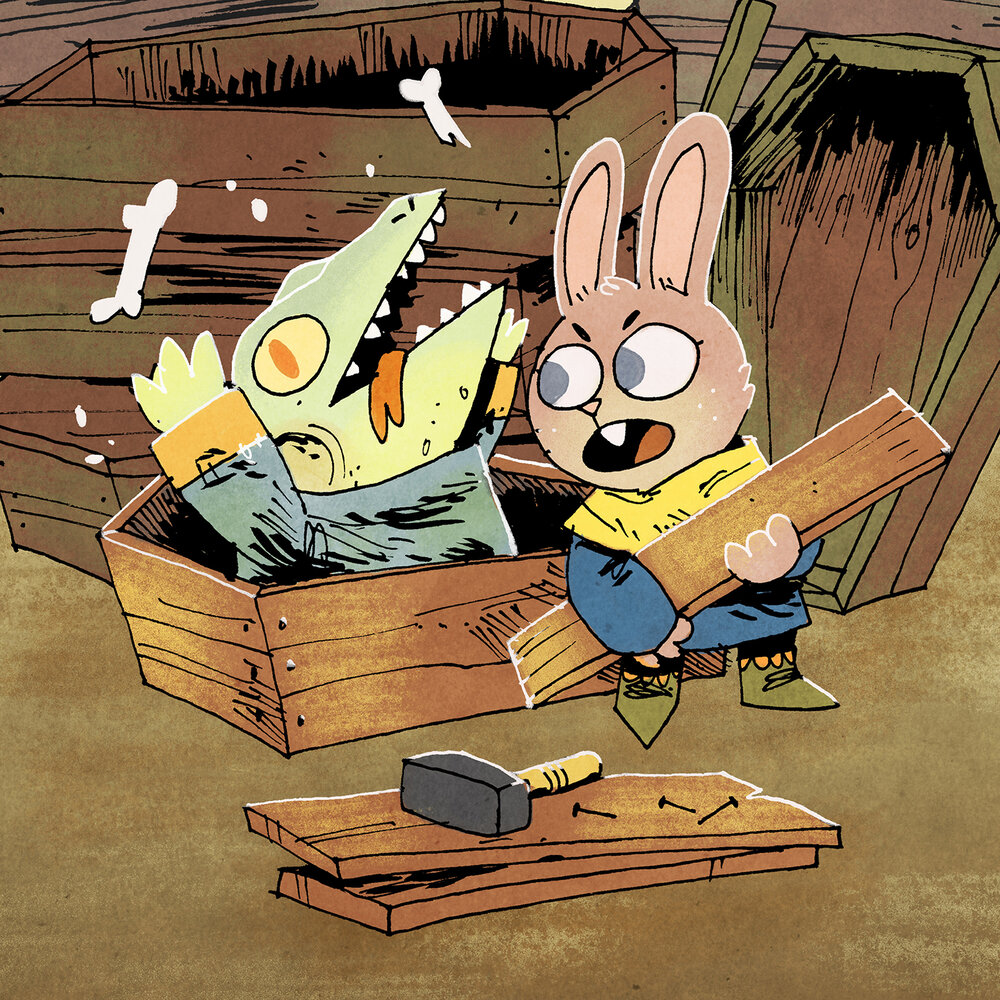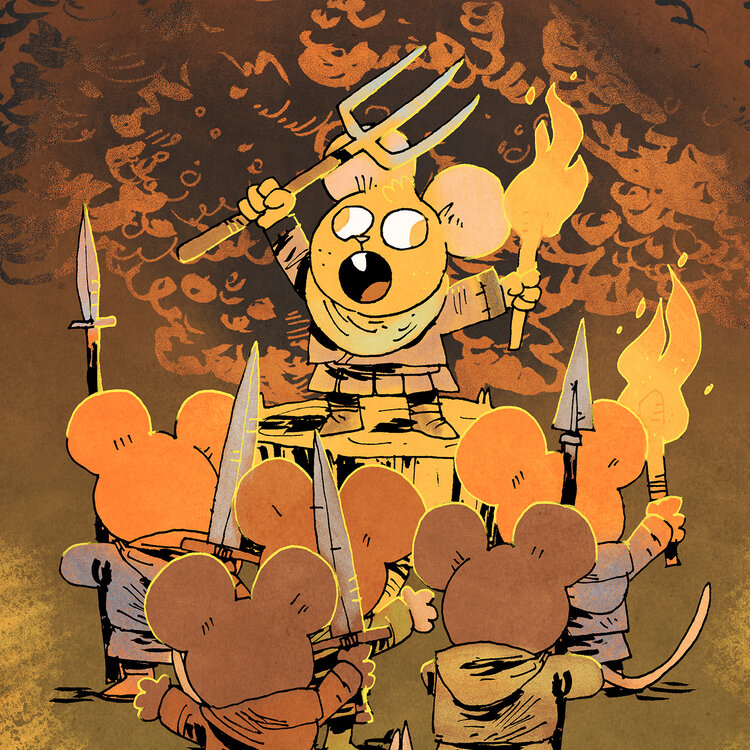So, perhaps you saw our review of Root the other week. Or, maybe during your weekly games of 40k, AoS, Magic, or the like at your FLGS you keep seeing a colorful board game box promising Woodland Warfare and think: “Hm. Is that for me?” Or, like many board game adjacent folk, perhaps you’ve just seen somewhat nonstop coverage of Root, Cole Wehrle, and Leder Games since the series first burst onto the scene.
It would be hard to throw a meeple into board game media and not see or hear something about Root. But what exactly IS Root, what are COIN games, how are they related to CONSIMs and Wargaming, and, most importantly, should you consider picking up that enticing colorful box you keep eyeing across the bar, and seeing if he can really provide you 60-90 minutes of entertainment?
Well, this isn’t quite a review (we did that already!), but this article wants to try and introduce the style of game Root is inspired by and reworks, and why that genre is one of board gaming’s most interesting, but least understood and appreciated, subgenres. If you’re new or less familiar with board games, hopefully this article will give you the courage to consider picking up a new style of game, especially one that might be closer in the comfort zone of tabletop wargaming than you might expect!
No, “Conflict Simulator” is Not What We Call Talking to Our Therapist

In our own review, we called Root a game inspired by CONSIM (Conflict Simulator/Simulation) and COIN (COunterINsurgency) games, but… what do those terms even mean? And, is that a good thing, or a bad thing? Well, let’s start with CONSIM games first. CONSIMs are games about war, but they aren’t exactly about the actual FIGHTING of wars, but of, well, simulating conflict.
This allows them a greath deal of depth and fiddlyness that goes beyond moving little soldiers around on maps (like Risk), and more about worrying if you have enough grain to survive the winter so that your troops are able to fight properly. CONSIMs are jokingly made fun of for their extremely ‘beige’ color schemes, as the intense mechanics and fiddly bits of cardboard involved in playing them tend to put form over aesthetics. There is a sense of grognard greybeard to CONSIMs, something that makes them seem almost quaint and ancient, and perhaps even a little exclusionary in the process.

This is likely not by design (we hope)–at least not by most designers in the modern CONSIM space-but perhaps just due to the fact that CONSIM games look, and play, in frankly uninviting ways. They are not flashy, attractive, or even very active. They eat tablespace like a hungry termite, sprawling across your kitchen table as you try to relive the organizational stress of the Peloponnesian War, or the eventual collapse of the Comanche Empire.
You see, the biggest selling point of CONSIM games is that they are historical, pulling from human conflicts both modern and ancient and everywhere in between. While many CONSIMs will inevitably draw upon ‘famous’ conflicts (World Wars, American and European involved wars, Roman era war etc.), CONSIMs have a surprisingly huge depth and breadth of potential topics, periods, and focal points. GMT, perhaps one of the best known publishers of CONSIM games, offers a veritable human historical timeline of games.
More recent titles have explored, in great detail, historical conflicts that seat players in the roles of marginalized and non-white groups, making CONSIMs an expanding and interestingly representative way to explore history. For a recent and unique example of how “Conflict Simulator” isn’t always about war, GMT recently published Cross Bronx Expressway, a game that explores the conflict of “rebuilding” the Bronx from 1940-2000, looking at socio-economic conflicts rather than “grand war” ones.
COINs can be Exchanged for Goods and Services

COIN games, functionally, are a subset of CONSIM games. The biggest and most obvious aspects of COIN games is that thematically they deal with an insurgent/counterinsurgent set of conflict, and mechanically tend to feature heavy asymmetry and card based systems. Players draw from a shared deck, and the cards drive much of what actions can be taken and what effects happen, while each player tries to maneuver their unique faction to victory. While CONSIM games tend to be very granular, relying on various systems to create immersive simulation (and, often, play best solo), COIN games “gamify” conflict by giving players aysmmetric factions that have their own powers, victory engines, and more.
Perhaps the most famous COIN game, or at least the one that comes up the most often when discussing the genre, is GMT’s Cuba Libre, designed by Jeff Grossman and Volko Ruhnke, in which 1-4 players take on various parts of the revolutionary period of Cuba’s history. The factions include Castro’s Communist movement, Anti-communist guerrillas, the dictator Fulgencio Batista’s floundering US-tied government fighting off both groups, and finally the Meyer Lansky “gangster” faction, looking to keep Cuba the Ganster’s Paradise (they make a lot of casinos). While it’s common to play games where each faction behaves differently, COIN factions win differently. It’s likely that as you improve your position you’ll also directly improve the positions of your opponents.
It is this focus on asymmetry that makes COIN games so fascinating and unique. While on paper it may not sound interesting or palatable to play as Anti-communists, in the game, their unique factional powers and abilities make it fun to try them out, because they play so differently from other groups in the same box. If, for example, you are new to board games, but familiar with tabletop wargames like 40k, AOS, Infinity, etc., then COIN games may actually be something you find comfortable to pick up and play.
The games usually come with play guides, scenarios, and other things that help not only set tone but also give the games a lot of flavor. Also, for those Historical gamers out there, COIN games are probably right up your alley, as they are almost exclusively based on historical events and overly thematic, which, somehow, makes them oddly refreshing and unique in board game spaces filled predominately with abstract themes and repetitive tropes.

The shared deck of cards in COIN games is also one of the more fun, but less discussed, aspects of the game. Instead of each faction just taking a turn doing something that (to other factions) seems totally foreign, COIN games direct general action through the use of cards that allow players to act and react to what is happening to the overall board state. This helps create aspects of tense conflict that goes beyond who wins a big battle, because cards might change the overall landscape of the game beyond just who won a scrap… and it may not even benefit the person who won to actually won it! Cards often have general effects that work on the board state, but also flag various factions, allowing them to do things when these cards are drawn, or react to the card being drawn, which extends that unique and crunchy asymmetry even further.
But the biggest boon to people looking to dip their toes into something other than miniatures or dudes on a map wargaming such as Risk is that playing various factions allows you to find the one you like the most, similar to finding that 40k army that YOU really enjoy. And, because COIN games functionally work very similar to one another, it isn’t surprising that various revisitings of these mechanics means playing one game makes you able to easily try more, but that doesn’t mean they’re all the same, or that there’s no innovation… Which makes a great segue, as now we can talk about Root.
Insurgency, but Make it Cute

One of the bigger issues with Root is also the charm point of the game: the cutesy art, provided by Kyle Ferrin. It is a somewhat deceptive aesthetic, as it makes people often ask if Root is kid-friendly, when the game is, really, barely even friendly at all (from a strategy point, not that it is hard). In our first part review, I mentioned that Root can bring out some nasty competitiveness and backstabbing, and that is very true, because COIN games have only one victor. This isn’t meant to dissuade people as much as it is a fair warning: if you are not a competitive gaming group, COIN games, and thus Root, is probably not for you. If, however, you and your group of friends are used to war in the 41st Millenium or the Age of Sigmar, then you know that wars have only one winner… and perhaps that winner can be you, but as a cute raccoon instead of a space marine.
Lest I be beset by people wanting to “Well Actually” at a girl (buy me a drink first at least), Root provides a spin on COIN but is not a pure COIN game. This is fine, because if I can be totally honest, that makes Root not only a great jumping on point for people who read this far and went ‘this sounds interesting,’ but it also makes the game immediately accessible. It is also, well, easy to understand and brightly colored, which helps quite a lot.
As mentioned over in our review, there are a lot of ways to play Root too. The digital video game and other officially supported virtual tabletop versions make Root one of the most accessible board games period, let alone COIN game. And if your idea of a board game is Monopoly or Risk or whatever you find in Target’s toy aisle (this is not an insult, that aisle is bussin’), Root does a lot of work to make you feel welcome, which is good, because the game is, uh, not friendly once people start hurling swords at you.

We’ll be covering Root’s expansions soon as well, but as an addendum to our initial review, if you are board game curious and come from a wargaming background, Root might actually be the best place for you to jump onboard the OTHER type of tabletop wargaming (and gaming, and not the roleplaying kind–well, actually, there IS a Root TTRPG, but, uh, ANYWAY,), without the need to assemble an army and paint it. You get them for free* (*With purchase of game), in cute painted wooden meeples of various animals (I love the Lizards, by the way. Big fan of their goofy little faces and snoots). Seriously, if after your next batch of disastrously rolling 1s on overwatch makes you turn towards your FLGS’s board game wall in anguish, consider picking up Root. While you are still going to roll badly, at least it will give you a new outlet of ways to do so.
Formenting Forest Frivolity for Friends and Foes

Perhaps this article might actually sound counter to my other one, as I am singing Root’s praises quite a bit. But, really, this article is more in hope of explaining what COIN and CONSIM games are, and giving you, curious reader, an idea of whether or not those games are for you. And in that sense, Root is actually a must buy, as it gives you a chance to interact with a genre of games that explores mechanics and settings not found in other games (at least, not in other board games–your closest video game counterparts would be games like Civilization and Age of Empire, and even those focus mostly on just amassing a big army).
Maybe the best thing I can say here also is that Root is just immediately accessible. I love GMT and Hollandspiele (both of whom publish a bulk of, and frankly, the best of, CONSIM, COIN, and other unique conflict games–This Guilty Land and The Vote being two historically brutal but also amazing games), but most FLGS will carry big retail product and Kickstarter hits, of which Root comfortably fits into. It also sells well, and gets a lot of continued support, making the game in-print and easy to obtain (which, in the COVID era, is a blessing).

Most importantly, the dream is that this helps push you to try these games (not just Root, but maybe start there!) for yourself. If you read Goonhammer, there is a likelihood you already really like the idea of orchestrating and enacting various sized conflicts and combats in search of victory points, and CONSIM and COIN games are a different flavor of that hobby, one that you may find far more comfortable in than you might imagine. In fact, I’d say wargamers are probably going to pick up and understand a game like Root faster than the average board gaming group, as the need for conflict and brutal strategy mixes well with having various factions and powers. As a word of warning for when you do give it a try, keep your eye on that Vagabond. You’d be amazed at how often that little asshole wins.



You must be logged in to post a comment.